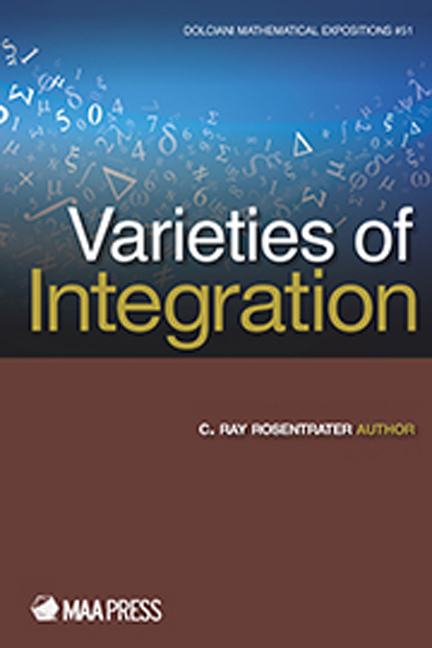Book contents
- Frontmatter
- Preface
- Contents
- 1 Historical Introduction
- 2 The Riemann Integral
- 3 The Darboux integral
- 4 A Functional zoo
- 5 Another Approach: Measure Theory
- 6 The Lebesgue Integral
- 7 The Gauge Integral
- 8 Stieltjes-type Integrals and Extensions
- 9 A Look Back
- 10 Afterword: L2 Spaces and Fourier Series
- Appendices: A Compendium of Definitions and Results
- Index
- About the Author
1 - Historical Introduction
- Frontmatter
- Preface
- Contents
- 1 Historical Introduction
- 2 The Riemann Integral
- 3 The Darboux integral
- 4 A Functional zoo
- 5 Another Approach: Measure Theory
- 6 The Lebesgue Integral
- 7 The Gauge Integral
- 8 Stieltjes-type Integrals and Extensions
- 9 A Look Back
- 10 Afterword: L2 Spaces and Fourier Series
- Appendices: A Compendium of Definitions and Results
- Index
- About the Author
Summary
The Riemann integral is usually introduced in elementary calculus classes via a problem with roots in early Greek mathematics—the problem of finding the area of a region R. Modern readers of mathematics expect the area to be expressed as a number. But what does this number mean? One way of interpreting the number is to think of it as representing the length of one side of a rectangle whose other side has unit length. Then the areas of the region R and the rectangle are the same.
Greek foreshadowing
Following this line of thought, a Greek solution to an area problem consisted of finding a square (or equivalently a rectangle or triangle) having the same area as the region in question.
The lunes of Hippocrates of Chios (c. 470–410 BCE) provide an early example of this type of problem. Hippocrates’ work was done in an attempt to find a square or triangle with the same area as a given circle. Referring to Figure 1.1, Hippocrates was able to prove that the area of a portion of the circle with diameter AD has the same area as a triangle. Specifically, the crescent AEDF has the same area as the triangle ACD. (See exercise 1.) Hippocrates’ result reduced the task of finding a square to represent the area of a circle to the problem of constructing a square to represent the area of the region AGDE. About two millennia later, Ferdinand von Lindemann would show that this task is impossible by demonstrating that π is a transcendental number. (See [Baker] and [Lindemann].)
Archimedes of Syracuse (287–212 BCE) proved that the area of a circle is equal to the area of a triangle whose base has the same length as the circumference of the circle and whose height is the radius of the circle. (See exercises 7 and 8.) In modern notation, the area of the triangle, and so of the circle, is
While Archimedes’ formulation of the result may seem odd to us, we need to appreciate that the first glimmers of algebraic notation did not appear until the 3rd-century CE work of Diophantus of Alexandria and that algebraic notation did not reach a state of relative maturity until the 17th century in the work of Descartes and Fermat.
- Type
- Chapter
- Information
- Varieties of Integration , pp. 1 - 24Publisher: Mathematical Association of AmericaPrint publication year: 2015



